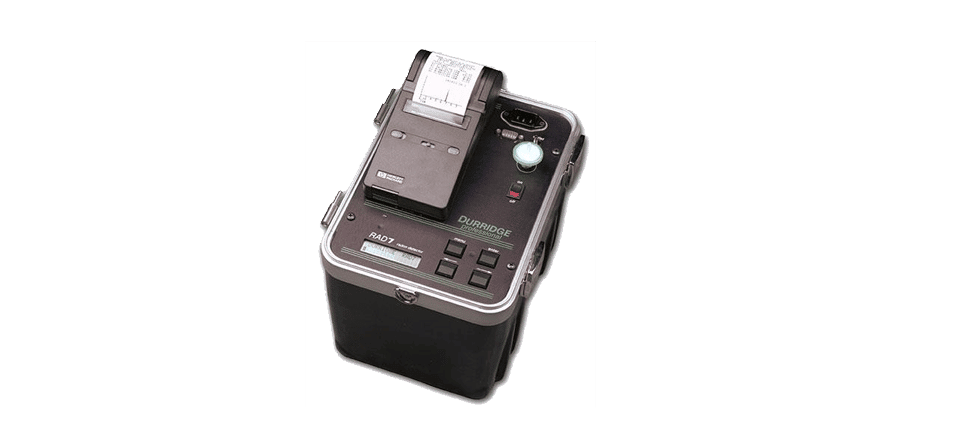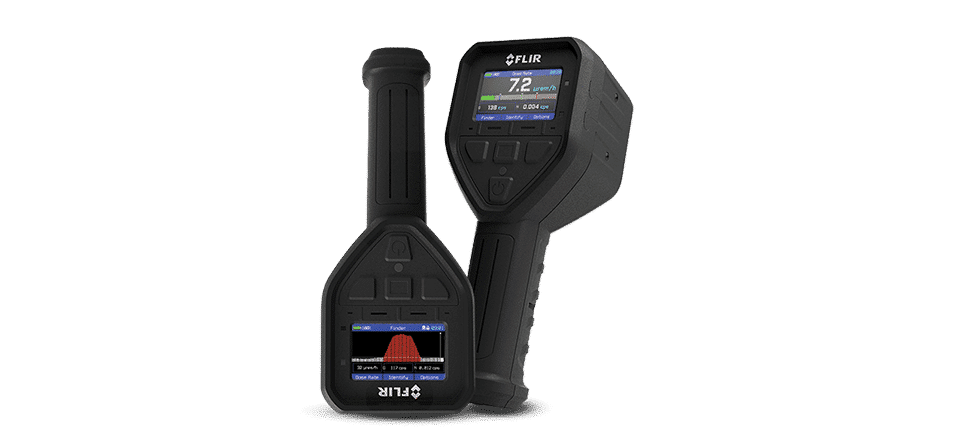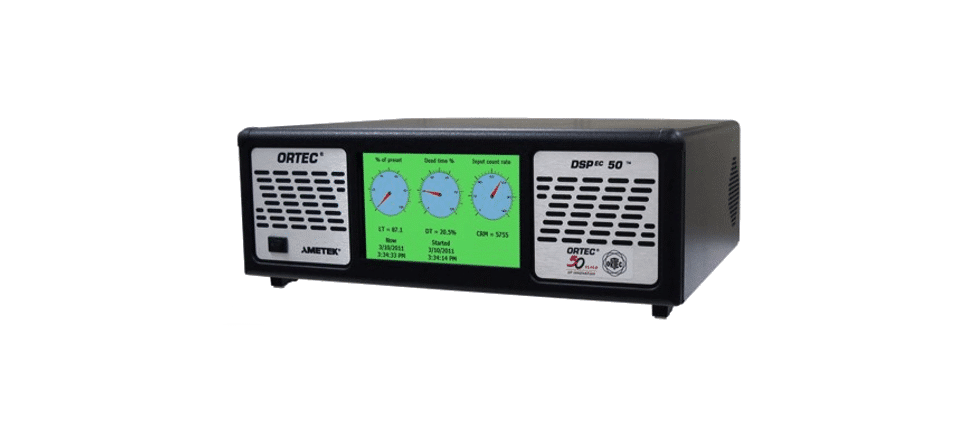Notes d'applications nucléaire - radioprotection
Pour vous permettre une meilleure mise en oeuvre de vos expèriences
HTDS nucléaire vous propose les notes d'applications de ses fournisseurs pour une meilleure mise en oevre de vos expèriences et tests.
AMETEK ORTEC
AN63 – Simply Managing Dead Time Errors in Gamma Ray Spectrometry
Provides simple processes for overcoming the systematic and random errors caused by dead time in a gamma-ray spectrometer. The applicability of the livetime clock for sources generating essentially constant counting rate, and the Zero Dead Time (ZDT) scheme for sources with changing counting rates are explained. The statistical error to be reported in the measured counting rate is defined in both circumstances. The explanations are related to ORTEC gamma-ray spectrometers. But, with minor adjustments, they can be adapted to energy spectrometers for x rays, alpha particles and beta particles, or spectrometers from other manufacturers.
AN59 – How Counting Statistics Controls Detection Limits and Peak Precision
AN58 – How Histogramming and Counting Statistics Affect Peak Position Precision
AN57 – Dealing with Dead Time Distortion in a Time Digitizer
This study examines the dead time distortions inherent with time digitizers applied to high event rates. It includes a practical scheme for making dead time corrections to the time spectrum after the spectrum has been acquired. The principles are elucidated by the typical application in Time-of-Flight Mass Spectrometry (TOF-MS).
AN56 – Loss Free Counting with Uncertainty Analysis Using Innovative Zero Dead Time Technique
The ORTEC loss free counting method with estimation of the uncertainty associated with the collected data is accurate for rapidly changing count rate applications.
AN52 – Pico-Second Time Analyzer Applications in Lidar, Dial, Time of Flight Mass Spectrometry, Fluorescence/Phosphorescence Lifetime Spectrometry, and Pulse or Signal-Jitter Analysis
AN52 explains the concepts of Multiple-Stop Time Spectrometry and the capabilities of the ORTEC Picosecond Time Analyzer (Model 9308) for the above applications. Techniques are described that measure ns to µs time periods to a precision of 1.22 picoseconds and digital resolution of 65,000 to 1.
AN51 – Pulse Processing Electronics for Single Photon Counting (from 10 to 107 Counts/s)
Counting Single-photon counting is a powerful measurement tool for quantitative measurements with low-intensity light sources. It provides excellent linearity and precision over a dynamic range of 100,000:1. This application note describes the instrumentation and methods for suitable single-photon counting with both steady-state and time-variant light sources. Simple explanations of how the systems work are provided along with a summary of the precision available under extreme operating conditions. Examples are provided for DIAL, LIDAR, Raman Spectroscopy, and Phosphorescence Decay applications.
AN50 – Instrumentation for Fluorescence Lifetime Spectrometry
This application note explains the basic principles of Fluorescence Lifetime Spectrometry and describes the electronic instrumentation needed to construct a system with picosecond time resolution. Guidelines are provided for adjusting the key operating parameters. A list of recommended instrumentation is included.
AN42 – Principles and Applications of Timing Spectroscopy
AN40 – Heavy Ion Spectroscopy with Silicon Surface Barrier Detectors
AN34 – Experiments in Nuclear Science
Introduction to Theory and Basic Applications: Methods and Electronics for detection of Alpha, Beta, Gamma, X-Ray, and Neutron Radiation.
The experiments outlined in this laboratory manual are the result of many years of developing and refining experiments in nuclear science for the undergraduate laboratory. It is recommended that each laboratory course manager select the appropriate experiments, and modify them to suit the specific needs and equipment in the intended program.
Whys and Wherefores of Measuring Drum Activity with ISO-CART and the Program Isotopic
Decommissioning, decontamination, and normal processing of nuclear waste generates quantities of radioactive material in the form of many different matrices stored in many different sized containers. These containers must be measured to assay their radioactive content before moving, shipping offsite, burying, or placing in a storage area. Within their wide range of spectroscopy systems and products, ORTEC offers two products of great utility in this area, which specifically provide simple and cost-effective solutions to these gamma-ray measurement problems.
Sample Preparation for Low Level Alpha Spectrometry – Air, Filters, Water and Soil
Guidelines for Low Level Gamma Spectrometry – Air, Filters, Water and Soil
Best Choice of High Purity Germanium (HPGe) Detector
The choice of the best HPGe detector for your particular measurement situation is based on a few simple rules. The rules are given and are based on some basic concepts about how the detection process works, how gamma rays penetrate materials, and the principles of gamma-ray spectroscopy




